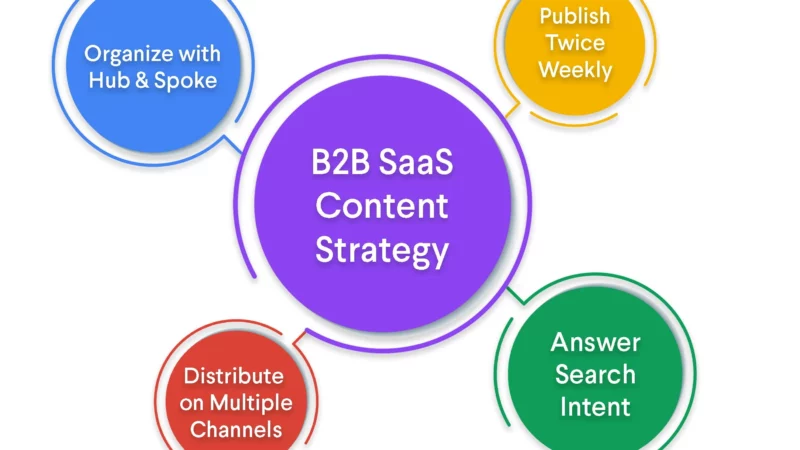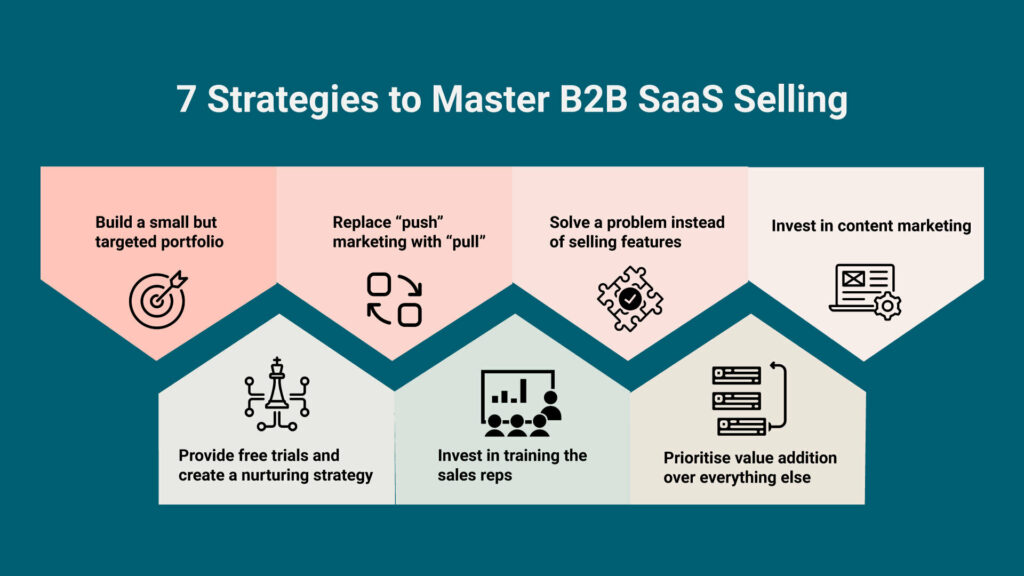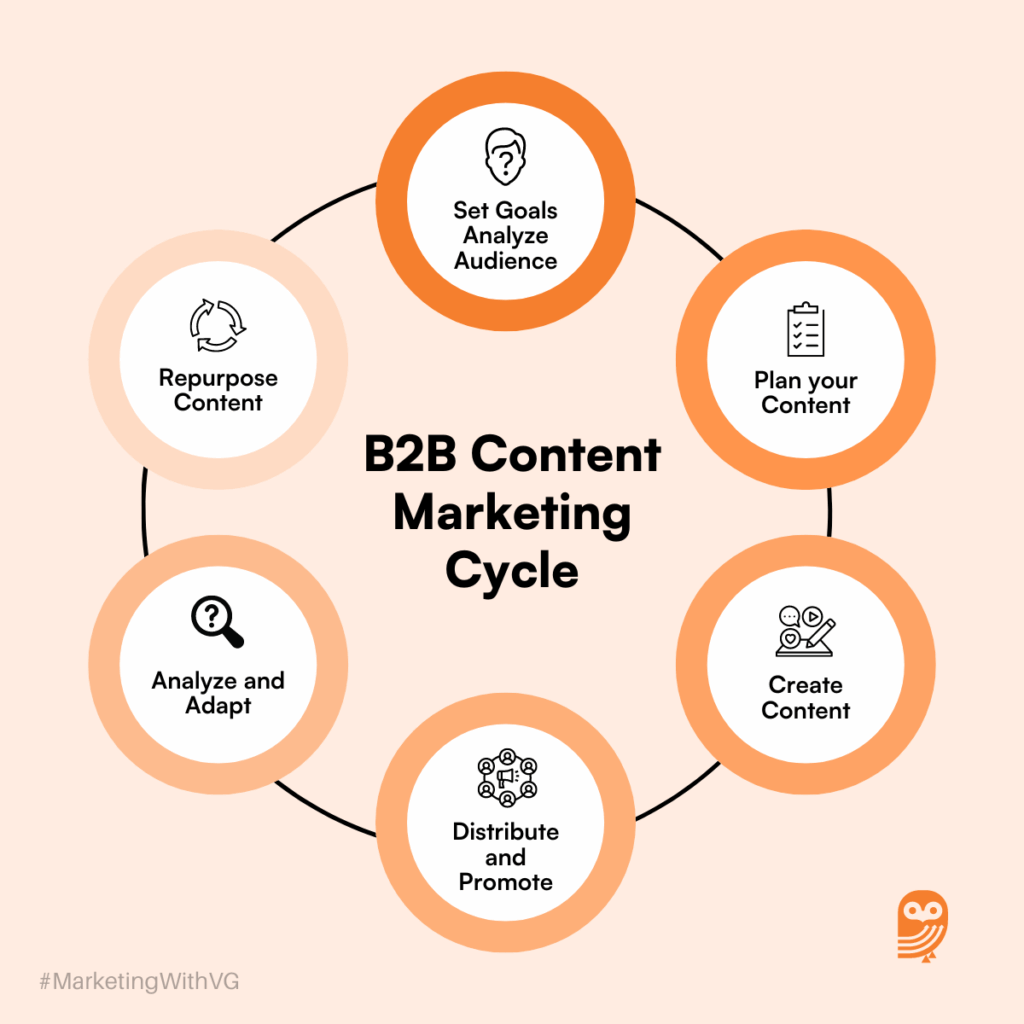How to create a content marketing strategy for a B2B SaaS company

In the competitive landscape of Software as a Service (SaaS), content isn’t just a nice-to-have—it’s the backbone of your entire B2B (Business-to-Business) growth engine. Unlike B2C companies, where purchases are often impulsive, B2B sales cycles are long, involve multiple stakeholders, and are driven by logic and data. Your content marketing strategy must, therefore, be a meticulously designed machine, engineered to build trust, educate complex users, and ultimately, convert enterprise leads into paying, long-term customers.
This comprehensive guide will walk you through a seven-step, SEO-focused framework to build a content strategy that drives measurable growth, positions your SaaS brand as a thought leader, and ensures every piece of content works tirelessly for your bottom line.
The Foundation: Defining Your B2B SaaS Content Core

Before you write a single blog post, you must establish the strategic pillars of your operation. A well-defined core ensures consistency, relevance, and maximum ROI.
1. Identify Your Ideal Customer Profile (ICP) and Pain Points
The B2B SaaS buyer is not a single person. They are a committee, each with different priorities (e.g., the CFO cares about cost, the Head of IT cares about integration, and the end-user cares about usability).
- Create Detailed Personas: Go beyond job titles. Understand their goals, daily challenges, the metrics they are judged on, and—most importantly—their deepest pain points related to your niche.
- Example: If you sell a Project Management tool, a persona might be “Sarah, the Overloaded Marketing Manager,” whose pain point is wasting time updating spreadsheets for executive reports.
- Analyze Their Journey: Map the questions your ICP asks at every stage:
- Awareness: “Why is my current process so slow?” (Problem-Aware)
- Consideration: “What are the best Project Management tools for marketing teams?” (Solution-Aware)
- Decision: “How does [Your Product] compare to [Competitor] on integration and pricing?” (Product-Aware)
2. Define Clear, Measurable Goals (The SMART Framework)
Vague goals lead to wasted effort. Your content goals must directly align with business outcomes, not vanity metrics.
- Bad Goal: “Get more blog traffic.”
- Good Goal (SMART): “Increase qualified demo sign-ups from organic traffic by 20% within the next six months.”
Your goals should map to the funnel:
- Top-Funnel (Awareness): Increase Organic Traffic, Improve Keyword Rankings.
- Mid-Funnel (Consideration): Increase Email Subscribers, Improve Time on Page, Increase Ebook Downloads.
- Bottom-Funnel (Decision): Increase Free Trial/Demo Sign-ups, Improve Lead Quality.
The Engine: Mastering SaaS SEO and Content Mapping
For a B2B SaaS company, organic search is arguably the most valuable channel because it captures users with high intent at the exact moment they are looking for a solution.
3. Conduct High-Intent Keyword Research and Cluster Creation
Your research must focus on intent over volume. High-volume, generic keywords like “Project Management” are too competitive. Instead, target long-tail keywords that indicate a problem or a comparison.
- Focus on Problem-Solving Keywords: Target phrases like “how to automate weekly status reports” or “best project management tool for remote teams.”
- Embrace Comparison Keywords (Decision Stage): These are extremely high-intent. Target “[Your Product] vs. Asana” or “Asana alternatives 2025.”
- Adopt the Topic Cluster Model: Instead of publishing random articles, organize your content around comprehensive Pillar Pages (long, definitive guides) linked to several Cluster Content pieces (specific, related sub-topics). This signals domain authority to search engines.
- Pillar Example: “The Complete Guide to Remote Team Collaboration.”
- Cluster Example: “5 Tools to Improve Remote Meeting Efficiency,” or “Best Practices for Asynchronous Communication.”
4. Map Content Types to the Buyer’s Journey (The Funnel)
Each stage of the funnel requires a different format to address the user’s specific state of awareness.
| Funnel Stage | Content Goal | Best Content Formats |
| Top (Awareness) | Attract, Educate, Establish Authority | Blog Posts (long-form), Educational Videos, Infographics, Industry Trends Reports. |
| Middle (Consideration) | Nurture, Solve Specific Problems, Build Trust | Ebooks/Whitepapers, Detailed Guides, Webinars, Templates/Checklists, Case Studies (non-specific results). |
| Bottom (Decision) | Convert, Prove Value, Address Final Objections | Case Studies (detailed ROI), Product Demos, Comparison Pages, Pricing Guides, Free Trials. |
The Execution: Production, Promotion, and Optimization
A strategy is only as good as its execution. Here’s how to deliver quality and ensure visibility.

5. Prioritize Quality, Depth, and SEO Optimization
In B2B SaaS, content must be definitive and trustworthy. Shallow content does not rank and will not convert sophisticated buyers.
- Focus on E-E-A-T (Experience, Expertise, Authoritativeness, Trustworthiness): Have your in-house experts (engineers, product managers, or sales leaders) contribute to or review the content. This is crucial for YMYL (Your Money or Your Life) topics that involve complex business decisions.
- On-Page SEO Checklist:
- Include the primary keyword in the title, H1, first paragraph, and URL slug.
- Use a clear heading structure (H2, H3, H4) to improve readability and machine comprehension.
- Ensure internal linking connects new content to your Pillar Pages and existing high-authority content.
- Optimize your Meta Title and Meta Description for high Click-Through Rate (CTR), making them compelling and benefit-driven.
- Technical SEO: Maintain fast loading speeds, a mobile-responsive design, and a clean site structure to ensure Google can easily crawl and index your valuable content.
6. Design a Robust Distribution Strategy
Organic search is your target, but relying on it exclusively is slow. You must actively push your content to the places your ICP already spends their time.
- LinkedIn Dominance: For B2B, LinkedIn is non-negotiable. Repurpose key takeaways from your long-form content into native posts, carousels, or short videos.
- Email Nurturing: Use your Ebooks and Webinars to capture leads, then enroll them in a targeted email sequence that delivers relevant content based on their observed pain points.
- Repurpose Across Channels:
- A Pillar Page
Becomes a Webinar
Which is sliced into 10 LinkedIn Posts
And summarized in a Guest Post on an industry site (for backlink generation).
- A Pillar Page
- Backlink Acquisition: Identify influential industry blogs and offer high-value content (guest posts, original data/research) in exchange for a link back to your definitive guides. For SaaS, this link building is vital for competitive keywords.
7. Track Performance and Commit to Content Refreshing
Content is a long-term asset, but it requires maintenance. You must track KPIs and be prepared to update and re-optimize.
- Key KPIs to Track:
- Organic Traffic & Keyword Rankings: (Is the content being found?)
- Conversions: Lead Form Submissions, Demo Requests, Free Trial Sign-ups. (Is the content driving action?)
- Time on Page & Bounce Rate: (Is the content engaging?)
- Marketing-Qualified Leads (MQLs) to Sales-Qualified Leads (SQLs) Ratio: (Is the content attracting the right kind of leads?)
- The Content Refresh Cycle: Content decay is real. Schedule quarterly audits to identify high-potential articles that have slipped in rankings. Update statistics, add new sections, improve internal links, and republish with a new date. This signals freshness to Google and can deliver massive SEO gains with less effort than writing new content from scratch.
By following this strategic blueprint—focusing relentlessly on your ICP’s pain points, mapping content to the buyer journey, and adhering to strict SEO and quality standards—your B2B SaaS company will move beyond publishing random articles and build a powerful, scalable content machine designed for predictable, long-term revenue growth.
What is the biggest content bottleneck your B2B SaaS team currently faces: content creation, SEO performance, or lead conversion?